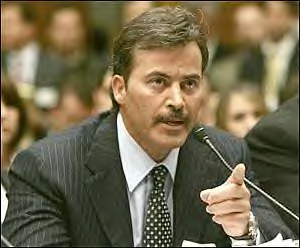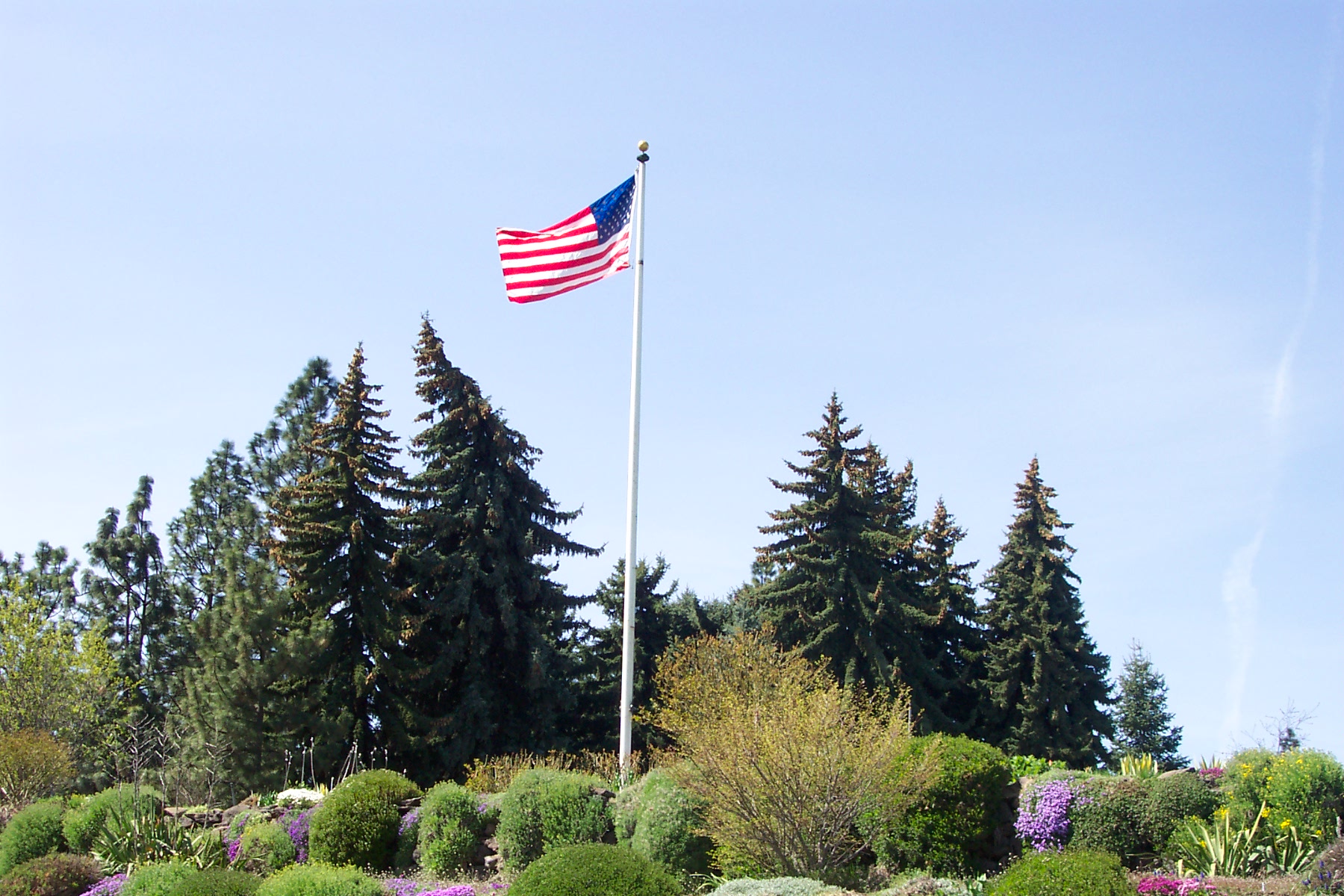SIGN

I have never used steroids. Period. --Rafael Palmeiro
Communication.
1. From Latin signum ("identifying mark"), something
that "suggests the presence or existence of a fact, condition, or quality"
(Soukanov 1992:1678). 2. In philosophy, as defined by Charles
S. Peirce, "a sign stands for something else" (Flew 1979:327; e.g., the
hand is a sign of humanity). 3. The
general term for anything that communicates, transmits, or carries information.
Usage I: Sign is the most generic label for a nonverbal
unit of expression, such as a gesture. While in a technical sense their meanings
differ, sign, signal, and cue
often may be used interchangeably.
Usage II: "It is useful to
distinguish at the outset between a sign vehicle: the material carrier or
physical substratum of a sign, the tangible 'sign stuff' (i.e., its actual
stone, clay, metal, glass, paper, or concrete substance), and a sign
form: the pattern or arrangement of lines, scratches, punctures,
meanders, shapes, etc., which can appear on varied vehicles. The sign form of
ancient Scandinavian runes, for instance, comprises the runic characters
themselves. Runic sign vehicles, on the other hand, can consist variously of
stone, wood, and paper materials" (Givens 1982:161).
Symbol. Some
signs are symbolic. A symbol (e.g., the American flag) is, "Something that
represents something else by association, resemblance, or convention, especially
a material object used to represent something invisible" (Soukhanov 1992:1817).
Symbolic signs may have an arbitrary (i.e., a non-iconic or unobvious)
connection to that which they represent, and thus must be learned. According to
Charles Peirce, "Man is a symbol" (quoted in Young 1978:9).
Triskelion. One of the oldest human signs is the 5,000-year-old neolithic triskelion, a graphic signal consisting of three juxtaposed whorls. Three is perhaps the most symbolic of numbers, suggesting strength, stability, and interactive synergy. The spirals themselves pleasantly suggest balance, harmony, order, proportion, rhythm, and symmetry. The single continuous line that forms the tri-spiral suggests "infinity," as conveyed by later signs such as the Mobius strip and the horizontal figure-eight symbol for infinity. A well studied triskelion is the 12"-diameter symbol engraved on stone in the interior of Newgrange, a restored, pre-Celtic megalithic passage tomb in Co. Meath, Ireland, built ca. 5,200 years ago. Centuries later, Celtic folk symbolized the three whorls as representative of Earth, Air, and Water. Centuries later still, Christians associated the triskelion spirals with the trinity of Father, Son, and Holy Ghost. Triskelion-themed jewelry and architecture enjoy worldwide popularity today.
Chevrolet bowtie sign. A more recent symbolic sign is Chevrolet's "bowtie" emblem. Introduced in 1913, the straight-edged, parallel-lined figure has marked the front end of Chevrolet cars and trucks since 1914. Its compact-linear, horizontal design suggests stability, integrity, and speed. The metallic golden color and silver border add richness to the geometric shape.

RESEARCH NOTES: 1. A
sign is "something that directs behavior with respect to something that
is not at the moment a stimulus" (Morris 1946:354). 2. A
sign carries information, which, as Norbert Wiener has pointed
out, "is information, not matter or energy" (1948:155).
See also MESSAGE.
BUMPER STICKER
Identity sign. Usually, a word or phrase upon a small placard affixed to the rear end of a motor vehicle. Nonverbally, the sticker's color and design draw eyes to the usually verbal message it frames (see MESSAGING FEATURE).
Usage. Bumper stickers may be used to proclaim strong political, religious or sports-related alliances and feelings. Among diverse additional messages they may also announce affiliation with consumer products, military branches and schools.
Meaning. Like message tee-shirts, hand-held placards and lawn signs, bumper stickers advertise one's personal identity and physical presence. They silently announce the existence, sometimes softly stated, of "me," and may sometimes interject an overstated existence of "ME!" The latter, more strident self-assertion has been associated with aggression and road rage.
Evolution. Cardboard and metal bumper signs originated in 1927 attached to bumpers of a U.S. motor vehicle, the Model A Ford. The modern sticker originated in 1946 from materials made available for marking military vehicles during WWII.
Neuro-notes. Bumper sign messages hit both cerebral brain hemispheres simultaneously and thus make powerful statements about a person"s fundamental alliances, attitudes, likes, dislikes, preferences, feelings and moods. Words and phrases register in verbal areas of the left-brain hemisphere, while colors, designs and graphic images register in nonverbal areas of the right brain (see HUMAN BRAIN, Right brain, left brain I-III).
See also LAPEL PIN.
EMBLEMS
Use of emblems. The emblem can be described as a symbolic object or representation which presents a particular quality, message or concept. There are some who argue that emblems have etymological roots in the Ciceronian meaning of the word: something that can be detached and re-attached. Indeed, some esoteric theorists argue that the visual sign has its true beginnings with the Lingua Adamica; the language between God and man. They argue that traces of these signs and emblems can be discerned in the hieroglyphics of the Egyptians and as such they present as 'uncorrupted' by the human tongue. The purest form of communication. In more modern times, it is generally agreed that the first book in English on emblems was entitled 'Choice of Emblems' and written by Geffrey Whitey in 1586. This book and later studies throughout the renaissance to more modern times indicate the potency of emblems to provide a 'network' of what McKeown (2010, xviii) calls "semiotic markers, signs, cognizances, devices, conceits and enigmas" in centuries which well preceded the current technological age. While this network could not be termed a 'world-wide web, early use of the emblem did provide a platform for understanding across cultures and in so doing, it was assimilated and adapted. There are evident parallels with this century's world wide web.
Speech-independent gestures. With specific reference to the nonverbal world, Ekman (1976, 1977) described speech-independent gestures as emblems. Children are able to decode speech independent gestures by the age of three and this capability dramatically increases by the age of five (Knapp, 226). Speech–independent gestures are typically culturally dependent, but some have universal currency such as the nose wrinkle to express disgust. For example, the ring gesture (where the thumb and forefinger are used to create a circle) means "okay" in the USA, but in some parts of Italy it means "asshole" and in parts of Turkey and Greece it can be interpreted as a vulgar sexual invitation. Similarly, the thumbs up gesture in the USA can be translated as "good" or "okay", but in the Middle East it is decoded as an obscene gesture.
(John White)
LAPEL PIN
Identity sign. A usually small, often circular, badge--pinned to a bag, jacket or other piece of fabric--that graphically, symbolically and/or verbally suggests allegiance to a political, religious or social group.
Usage. Nonverbally, lapel pins may be worn to show like affiliation or likemindedness (see ISOPRAXISM).
Placement. Worn on the left lapel of a sport or suit jacket, a lapel pin's asymmetric placement attracts notice as it contrasts with the human body's relentless bilateral symmetry.
Hue. Lapel pins may be multicolored to engage the human primate’s highly evolved color vision. They may be reflective, as well, to further attract notice.
Brooch. Significantly larger and more expensive are brooches, women's jewelry designed as very visible pins to be worn on fabric. Brooches may be purely decorative or decorative and political. Notable cases in point are the whimsical brooches worn by former Watergate prosecutor, Jill Wine-Banks in TV interviews during the 2019 Impeachment of U.S. president Donald Trump:
"When I was first on television in May 2017, the men were all wearing flag pins," Wine-Banks explained yesterday, reached by phone after her noon appearance on MSNBC, during which she wore a rectangular brooch that featured Lady Liberty and the word Vote.
"I had an old celluloid eagle above a shield that said 'Defend America,' and I thought, No one will notice it--it didn’t stand out. But someone on Twitter saw it, and I realized I was sending a message" (Yaeger 2018).
See also BUSINESS SUIT, COLLECTION, MEDIA.
Reference:
Yaeger, Lynn (2018), "How Jill Wine-Banks Uses Witty Pins to Express Her Progressive Politics." Vogue (Aug. 8, 2018; vogue.com [accessed Dec. 24, 2019]).
SIGN LANGUAGE
Hand signals
Verbal and nonverbal signals emitted by fingers, hands and arms addressed to a receiver's sense of vision (see VISION CUE). Hand signals may include "coded gestures" which form part of a formal system of signals, which actually constitute a real language. "The special feature of this category is that the individual units are valueless without reference to the other units in the code" (Morris, 1977, 34-35).
Usage
Sign language may be used to send diverse verbal and nonverbal messages, and blends of each. One may greet or beckon with a waved hand, tell a story in American Sign Language (ASL) or officiate a football game with hand signals. ASL's "inoculation," for example, is a pantomimed sequence of hand signs in which an extended index finger (the "needle") reaches to the upper arm's deltoid-muscle area ("injection site") as the thumb adducts to depress the shot's "plunger" (see MIME CUE). Verbal and linguistic-like messages may be sent by users of Irish, Plains-Indian and Australian Aborigine sign languages.
Aboriginal Sign Language
The meaning of Australian sign has much to do with substituting manual signs for words at times when the latter are taboo, as during initiation ceremonies and periods of mourning. They are also used when silence is called for, as in hunting, and when physical distance precludes hearing. A fully or partially extended index finger may be used as a visual pronoun to point at oneself ("I," "me") or others ("you," "you all").
Irish Sign Language (ISL)
Now ca. 200 years old and shaped by British Sign Language and French Sign Language, ISL was created by and for deaf people. It bears little grammatical resemblance to spoken English or Irish. The pronouns "I," "me" and "you" may be signed with a partially or
fully extended index finger aimed at the self ("me") or other ("you"). There is less digit or arm extension in the briefer sign-language point than is found in the longer-lasting, index-finger-point used as a speaking gesture (see POINT).
Plains Sign Language
Native North American tribes devised manual sign systems enabling members to communicate with speakers of mutually unintelligible languages. The systems include both grammatical, iconic, linguistic and symbolic hand shapes and movements. In pointing to another person ("you"), e.g., Na-Dene speakers may aim, adduct (hold together) and
extend the index and middle fingers, symbolically, to refer to combined female and male aspects of the person toward whom one points. To point at oneself, speakers may use an extended thumb to symbolize one's own sacredness, just as they thumb-point at babies (considered sacred) and sacred medicine bags. To point to animals in a distant field, speakers may adduct and extend all four fingers, palm down, to symbolize Earth. To greet a friend, a Na-Dene speaker may point to the left or heart-side of the chest with an extended thumb, followed by the palm-down, four-finger gesture extended horizontally away from the body. The sign's sweeping, physical extension symbolically extends one's own sacredness outward to the friend and world at large.
Neuro-notes
We respond to hand signs and gestures with an extreme alertness because specialized nerve cells in the lower temporal lobe respond exclusively to hand positions and shapes.
See also LANGUAGE.
Copyright 1998 -
2022 (David B. Givens & John White/Center for Nonverbal Studies)
Top: photo of Raphael Palmeiro testifying before a U.S. Congressional hearing on March 17, 2005. Note the pointing index finger, aimed at committee members, as Palmiero says, "I have never used steroids. Period. I don't know how to say it any more clearly than that. Never" (Givens 2008:10). (Picture credit: unknown.) Bottom: photo of U.S. flag flying above Manito Park's Rose Garden (Spokane, Washington, USA; picture credit: David B. Givens, copyright 2005)
